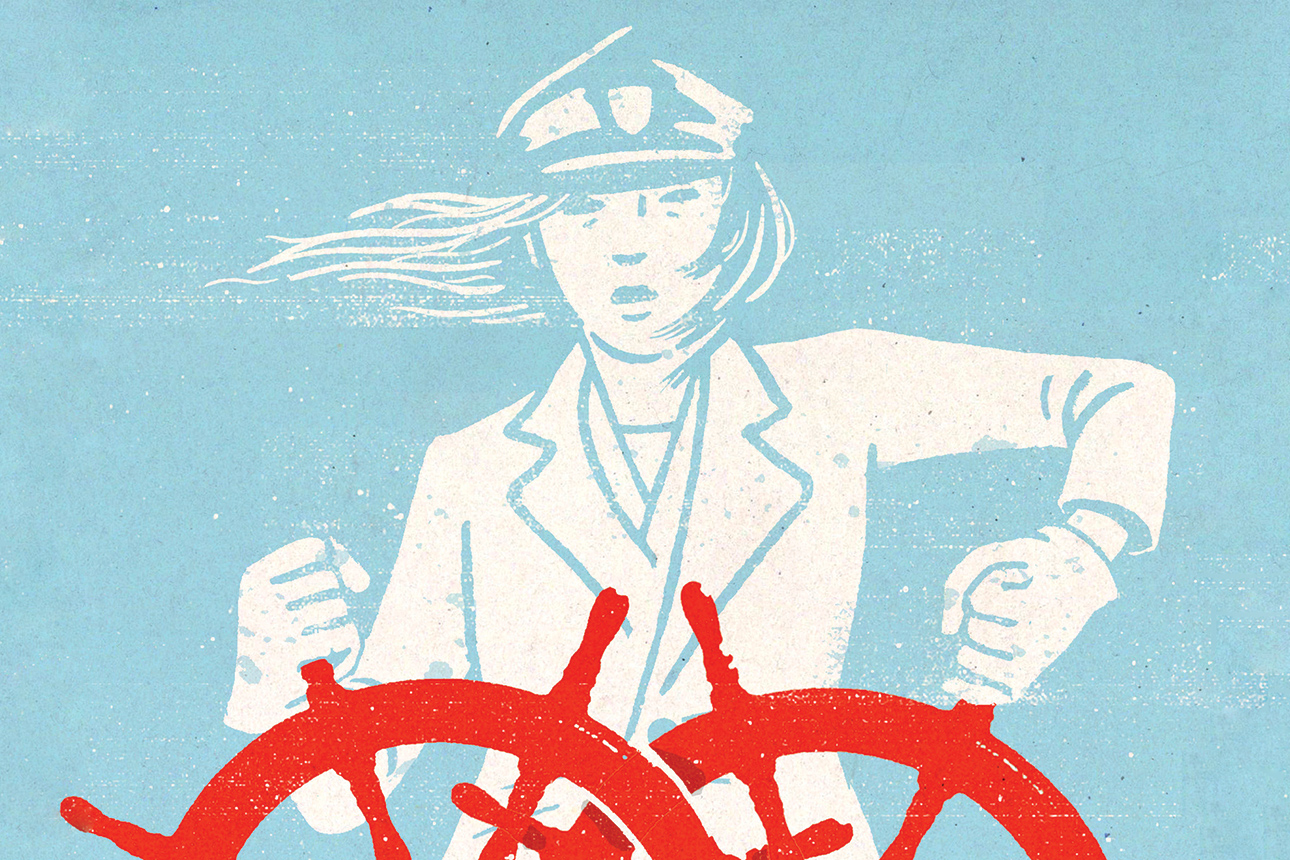Learned a lot lending an editorial hand on this report:
Economist Impact, June 2022
Digitally advanced firms are accelerating ahead of the competition. They are able to use real-time data insights to transform customer experiences and to improve their sustainability footprint. Discover how businesses can overcome data access and activation challenges to drive profitable growth.
The business landscape is constantly evolving and, with it, digital transformation. Businesses are under pressure to adapt to new competitors, increasingly from non-traditional markets, and to navigate ongoing geopolitical and economic uncertainty. At the same time, they need to become more sustainable and socially responsible, driven by government mandates and customer demands. Our new study shows that digitally driven businesses are able to embrace these rapid changes in their markets and deliver better customer experiences to drive profitable growth.
Indeed, the vast majority of firms we surveyed (99%) are leveraging new digital business models to tackle these challenges and drive greater agility, a trend that has been accelerated by covid-19. Over half (55%) of businesses expect a long-term increase in their use of digital technologies as a result of the pandemic, according to research by the European Investment Bank.
Firms that are able to capture and derive value from new streams of data, and offer new products and services rooted in digital capabilities, can improve their operational efficiency, reduce their carbon footprint and boost customer satisfaction. This can translate into improvements in both revenues and profit margins, with 80% of our survey respondents stating that some form of digital transformation contributes over half of their profits today. Moreover, 95% expect some, most, or all of their revenue to be digitally enabled within five years.
However, there is often a wide gulf between the digital ambitions of firms and their ability to use data insights at scale, which would enable employees to make better real-time decisions and drive higher levels of innovation.
To better understand these trends, Economist Impact has undertaken an ambitious research programme. We have examined the state of digital transformation in businesses across five sectors in which digitalisation offers substantial opportunities for growth and competitive advantage: construction and infrastructure; manufacturing; transportation and logistics; energy; and healthcare and pharmaceuticals. Our global survey of 500 multinational firms identifies the ongoing barriers they face in executing their digital strategies. We offer cross-industry insights on how these barriers are being overcome based on economic analysis of firms that are successfully using digital business models to boost their customer satisfaction, sustainability metrics and revenues, and interviews with experts. Read and download the report here.
Thursday, June 30, 2022
Accelerating digital: A win-win-win for customer experience, the environment and business growth
Posted by
Theodore Kinni
at
4:49 PM
0
comments
![]()
Labels: corporate success, digitization, innovation, management, platforms, technology, transformation
Tuesday, June 21, 2022
To improve management, build a decision factory
strategy+business, June 21, 2022
by Theodore Kinni
Illustration by Lava4images
“We think of organizations as decision factories,” write professors Don A. Moore and Max H. Bazerman in their new book, Decision Leadership. It’s an apt simile. Knowledge workers, whose output is typically decision-driven, now number more than 1 billion worldwide. Moreover, as the number of rote tasks that are automated increases, many more employees are being freed for higher-level work that entails decision-making.
Given this reality, it’s no surprise that boosting the decision intelligence of the workforce is moving up the leadership agenda. But Moore and Bazerman, holders of endowed chairs at the University of California, Berkeley’s Haas School of Business and Harvard Business School, respectively, take an even more expansive position on decision leadership—a stance that sets up a formidable ambition for this relatively short book.
“We aim to define leadership in a new way, one grounded in the belief that leaders’ success depends not only on their ability to make good decisions but also on their ability to help others make wise decisions,” they write. “In our view, great leaders create the norms, structures, incentives, and systems that allow their direct reports, the broader organization, consumers, investors, and other stakeholders to make decisions that maximize collective benefit through value creation.” To support their new definition of leadership, Moore and Bazerman seek to weave together the various threads of behavioral economics that pertain to decision-making and then translate them into practical advice for leaders who want to both improve the quality of their own decisions and bolster the decision prowess of their companies. Read the rest here.
Posted by
Theodore Kinni
at
2:13 PM
0
comments
![]()
Labels: bizbook review, books, corporate success, decision making, leadership, management
Friday, June 3, 2022
Mastering Innovation’s Toughest Trade-Offs
Learned a lot lending an editorial hand here:
MIT Sloan Management Review, June 2, 2022
by Christopher B. Bingham and Rory M. McDonald

Dan Page/theispot.com
These failures are often attributed to a lack of money, talent, or luck. But we think the underlying cause is that innovation in dynamic environments — those characterized by novelty, resource constraints, and uncertainty — is rife with critical tensions. When left unaddressed or mishandled, these tensions sink teams and organizations. Until now, there has been little focus on these tensions in practice or theory, leaving leaders blind to their existence and without the rigorous approaches needed to successfully manage them.
To address this, we conducted hundreds of interviews at organizations in diverse industries on five continents and surfaced eight questions that every innovation leader must be able to answer correctly. We’ll discuss each in turn and provide practical guidance for harnessing the tension that underlies each question. Read the rest here.
Posted by
Theodore Kinni
at
10:57 AM
0
comments
![]()
Thursday, June 2, 2022
A kinder, gentler deal
strategy+business, June 2, 2022
by Theodore Kinni
Photograph by Say-Cheese
Anyone who has been the underdog in a negotiation is going to eat up Barry Nalebuff’s new book, Split the Pie. The Milton Steinbach Professor at the Yale School of Management, who cofounded Honest Tea as a side gig, combines logic and empathy in a strategy that undercuts power-driven negotiating tactics.
The simple principle that drives Nalebuff’s approach is this: the negotiation pie—that is, the value produced by the deal, over and above the value that the parties to the deal can create on their own—should be equally spilt. It doesn’t matter who has the most power or who needs the deal the most—what matters is the value stemming from the deal and the inability of either party to achieve it without the other. In this sense, all the parties to the deal have a legitimate claim to an equal share of the negotiation pie.
Nalebuff illustrates this concept with an easily followed example: a pizzeria will give Alice and Bob a 12-slice pizza if they can agree how to split it. If they can’t, it will give them half a pie, but unequally divided: four slices to Alice and two slices to Bob. These no-deal slices comprise what Roger Fisher and William Ury called the BATNA (best alternative to a negotiated agreement) in their best-selling negotiation book, Getting to Yes.
Nalebuff’s solution is to focus on the additional slices that Alice and Bob get if they make a deal. He splits the six additional slices in half. This gives Alice a total of seven slices (her BATNA of four slices plus her half of the six slices in the negotiation pie) and Bob gets five slices (his BATNA of two slices plus his half of six slices in the negotiation pie). Voilà.
“The pie framework will change the way you approach negotiations in business and life,” writes Nalebuff, who has been teaching this approach to MBA students and executives at Yale for the past 15 years, as well as online at Coursera. “It will allow you to see the negotiation more clearly and more logically. It will lead you to an agreement where the principle applied doesn’t depend on the specifics of your situation. It will help you make arguments that persuade others by identifying inconsistencies in their approach.” Read the rest here.
Posted by
Theodore Kinni
at
9:20 AM
0
comments
![]()
Labels: bizbook review, books, corporate success, m&a, negotiation, personal success














